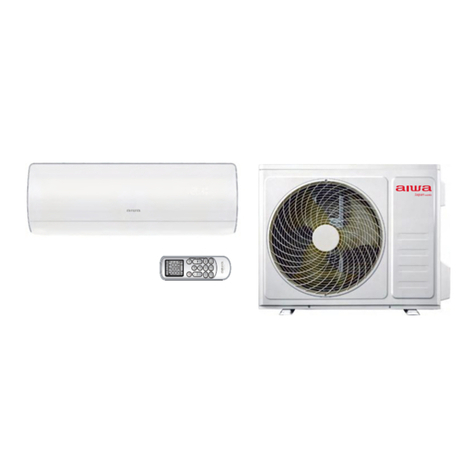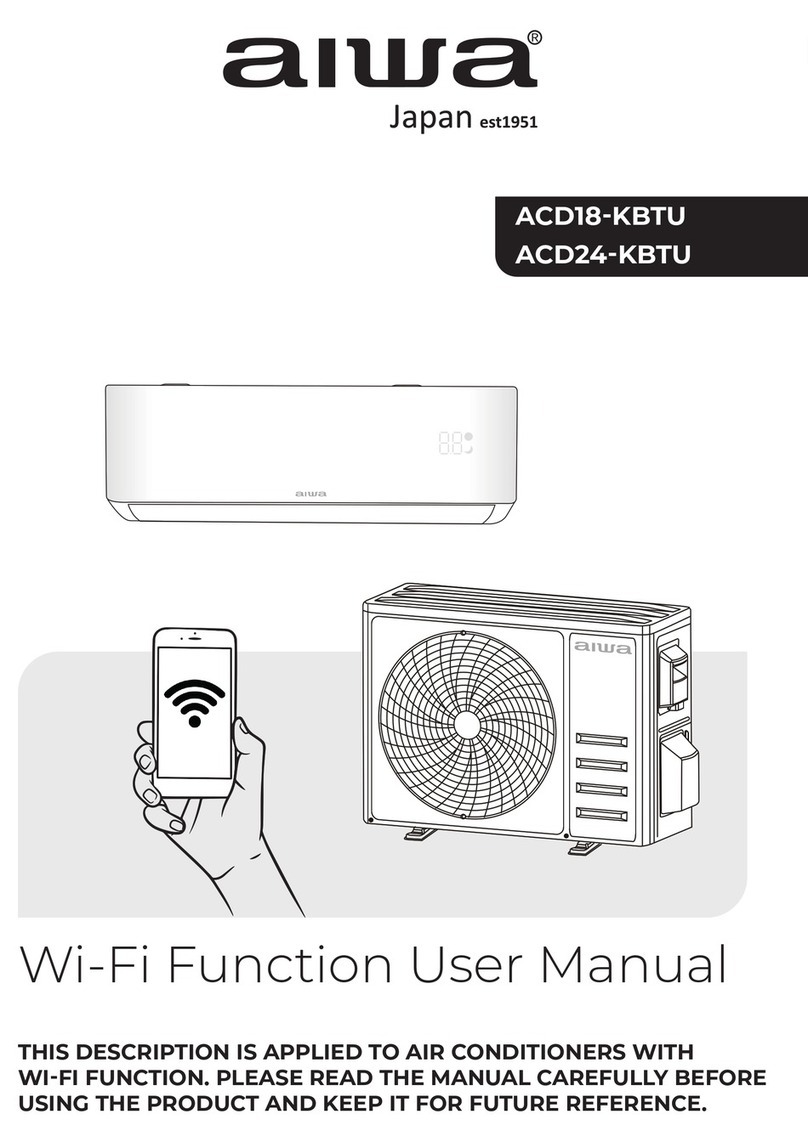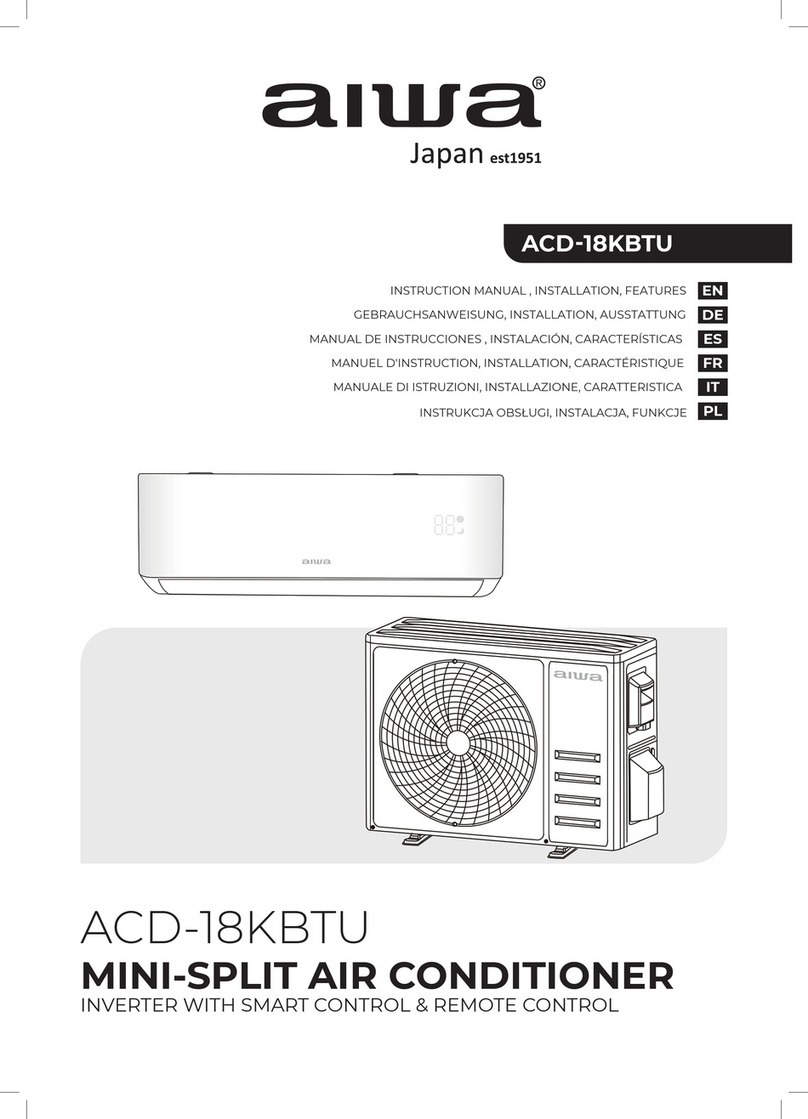
Air Conditioner Service Manual
2
CONTENTS
Part ⅠTechnical Information…………………………………...….…………3
1. Important Notice……………………………………………………….………..…………..3
2. Specifications………………………………………………………………..……………....4
2.1 Specifications sheet…………………………………………………….………………………..….……..….….4
2.2 The relation curve of CAPACITY-TEMPERATURE……………………………..……....………...…..………5
2.3 The relation curve of PRESSURE-TEMPERATURE……………………………………....………...…….….5
2.4 The relation curve of NOISE-COMPRESSURE OPERATION FREQUENCY…………....……...…….…..6
3. The Production Dimensions………………………………………………….…..……….7
4. Refrigeration cycle diagram……………………………………………………………….8
5. Electric Diagram……………………………………………………………….…….………9
5.1 Wiring Diagram…………………………………………………………………………………….….……..…..9
5.2 PCB LAOUT……………………………………………………………………………………..........…………12
6. ElectronicController Introduction…………………………………….……….…….…15
6.1 Remote controller…………………………………………….…………………….……………..........……….15
6.2 Electronic controller…………………………………….………………….……………………....…..………..17
6.3 WIFI introduction……………………………………………….……………..…..…..…….…………….……..24
.
PART ⅡInstallation and Maintenance……………..…….……….……….25
1. Notes for installation and maintenance.………………..……………………..……….25
2. Installation…………………………………………………………………………..……….33
2.1 Dimension diagram for Installation……………………………………………………....….…………..……..33
2.2 Inspection of Accessories …………………………………………………………………..………...….……..34
2.3 Position of IDU/ODU……………………………………………………………..…………………..………….35
2.4 Electric Connection………………………………..…………………………….…….……….………….…….35
2.5 The IDU Installation……………………………………..…….………………….…….……………...….…….35
2.6 The ODU Installation………………………………………..….………………….….….……….….…………38
2.7 Vacuum and Gas leakage test………………………………...……….………….……..……….….………..39
2.8 Final Test…………………………………………………………………………………………….….………..39
3. Maintenance………………………………………………………..…………….………….40
3.1 Failure code………………………………………………………………………….…….……….…………….41
3.2 Trouble shooting…………………………………………………….…………….………..……….…..……….42
4. Exploded View………………………………………….…………….…………..…………62
5. Disassembly IDU & ODU ………………………………………………………………….70
APPENDIX
1. The comparison table of CELSIUS-FAHRENHEIT temperature………..…………………..……………..79
2. The Pipe length and Gas charging…………………………………….…….…………………….……….…79
3. Pipe Flaring…………………………………………………………………….………………………..……….80
4. The Thermistor Temperature Characteristics…………………………….…….……………….…....………81































